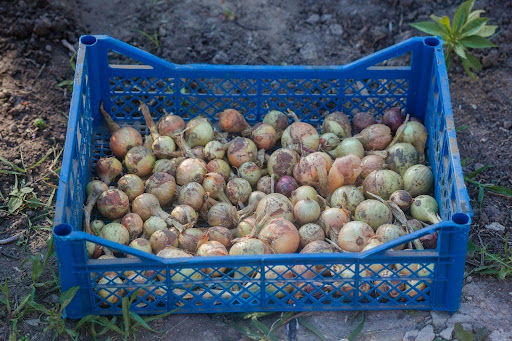Produce Spotlight: Leafy Greens
- Allissa Conley

- Jan 7
- 3 min read

Background
Fruits and vegetables are a healthy and important part of our diets. Leafy greens are especially beneficial as they are known to be full of vitamins, minerals, fiber, and antioxidants that can support our immune systems. Typically included in the leafy greens category are vegetables like spinach, kale, romaine lettuce, collard greens, and bok choy. Although they are great for us, we do have to keep in mind that they are usually consumed raw, meaning there is no further step taking place to kill any pathogens or bacteria that may be on the produce. So even though many servings are consumed safely, leafy greens have been linked to repeated foodborne illnesses caused by many things including Shiga toxin-producing E.coli (STEC), Listeria, Salmonella, Norovirus, and more.
Crop Characteristics
Leafy greens can easily become contaminated with bacteria due to crop characteristics and growing conditions. Traditionally, greens are growing low to the ground which increases the chance of exposure to contaminated water and soil. Also, when looking at the leaves at a microscopic level, they have a rough texture that can allow bacteria to more easily stick to the leaf surface. Leaves also contain structures called stomata that act as pores that bacteria may enter, which can make it harder to wash contamination off the leaves.
Outbreaks
There have been many different outbreaks associated with leafy greens over the years. Historically one of the most notable outbreaks occurred in 2006 with bagged spinach being contaminated from E.coli. By the end of the outbreak 204 people became ill, 104 hospitalized, and 3 had died2. While the FDA could not pinpoint the exact source of the contamination, they believe it was most likely linked to practices in the growing fields as they were adjacent to surface waterways and land used for grazing cattle.
More recently, another outbreak associated with leafy greens and Shiga toxin-producing E.coli (STEC) occurred in 2017 with 25 cases in 15 states resulting in 9 hospitalizations and 1 death3. The likely source of the outbreak appeared to be leafy greens, but the investigation did not identify a specific type of leafy greens as the source of the outbreak.
Further Impact
Researchers from The Ohio State University conducted a study on the burden and economic cost of foodborne illness associated with leafy greens in the United States and found that 9.18% of outbreaks are from leafy greens with 2.3 million illnesses annually1. That same study also found that the economic cost of the illnesses is substantial, up to $5.278 billion annually1.
Conclusions
While hazards cannot fully be removed from farming, it is always good to learn more about where they can occur on the landscape and the risks associated with the produce that your farm is growing. By continuing to learn more about outbreaks and crop characteristics it can help growers continue to grow and sell safe produce.
Sources
Desk, N. (2024, May 23). Study finds leafy greens responsible for significant portion of U.S. foodborne illnesses and costs. Food Safety News. https://www.foodsafetynews.com/2024/05/study-finds-leafy-greens-responsible-for-significant-portion-of-u-s-foodborne-illnesses-and-costs/
Calvin, L. (2007, June 1). Outbreak linked to spinach forces reassessment of food safety practices. USDA ERS - Outbreak Linked to Spinach Forces Reassessment of Food Safety Practices. https://www.ers.usda.gov/amber-waves/2007/june/outbreak-linked-to-spinach-forces-reassessment-of-food-safety-practices/#:~:text=Since%201996%2C%20leafy%20greens%20have,leafy%20greens%20over%20this%20period.
Centers for Disease Control and Prevention. (2018, January 25). 2017 E. coli Outbreak Linked to Leafy Greens. Centers for Disease Control and Prevention. https://archive.cdc.gov/#/details?url=https://www.cdc.gov/ecoli/2017/o157h7-12-17/index.html
---
Article by Allissa Conley, Produce Safety Technician


